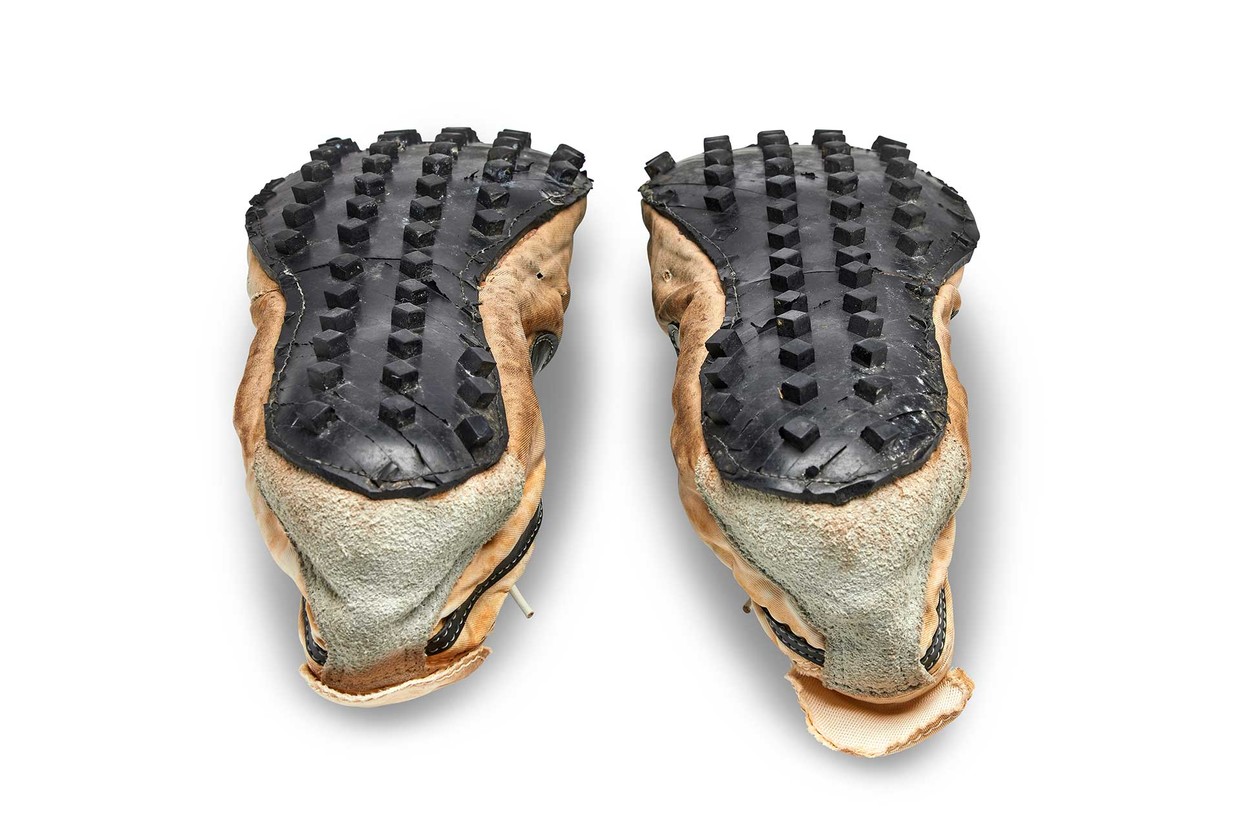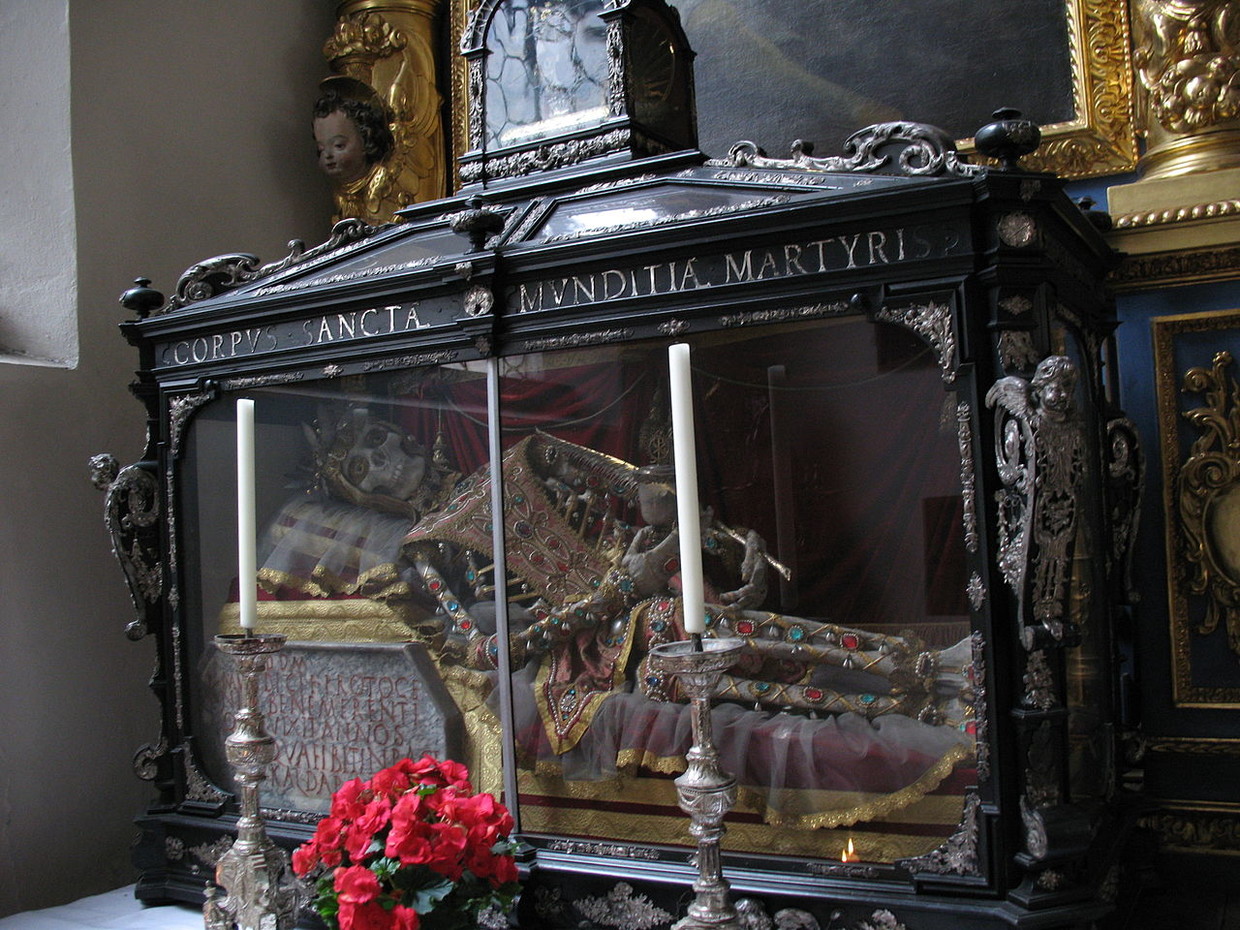The $438k old Nikes are holy relics of modern capitalism, like old saints’ bones were to Christians
Published time: 26 Jul, 2019 13:59Edited time: 26 Jul, 2019 21:35

The $437,500 paid for the Nike “moon shoes” at an auction this week demonstrates that our society values them as cultural artifacts to be preserved for future generations. Should the West be proud or ashamed of itself?
In order to see what they are – and why Canadian investor Miles Spencer Nadal decided to bid the record-breaking sum at the New York Sotheby’s – we must first understand what they are not.
They are not art. It’s tempting to use the trainers as vehicle for criticism of the creative bankruptcy of the commodified art world, where anything can be repackaged and sold with sufficient hype. But even the most artless of modern art objects – say, Piero Manzoni’s own tinned feces – contain an artistic intent. Warhol at his most capitalist-besotted self bothered to paint the Campbell’s soup cans, while these Nikes are not making a statement. They are literally just shoes.
ALSO ON RT.COMDon’t laugh at Koons’ Rabbit selling for $91 million – get angry at economic system that enables it
They are not an iconic industrial design. This is not an early version of the Coca-Cola bottle that appeared on the cover of Time magazine in 1950 and was used by billions of people, these are not even Nike’s own Air Jordans that propelled the company to international prominence. Just a prototype of a rubber sole shoe that few outside the community of collectible sneaker obsessives had heard about until this week. The functional, basic design was never adopted, much as it may have contributed to later models.

They are not personal memorabilia. This is not Marilyn Monroe’s dress that was also recently auctioned, the hat Napoleon wore at Waterloo, or the previously most-expensive sneakers which Michael Jordan laced up when he won gold at the 1984 Olympics. There is something of a story about Nike co-founder Bill Bowerman making the prototypes for the soles by pouring the rubber into his family waffle maker, but the shoes themselves are remarkable mostly due to the fact that they are the only unworn pair in existence of the dozen that had been produced.
So, what exactly did Nadal pay for?
Almost by deduction, he bought a little bit of American corporate history, the only thing that makes them valuable. You can argue that they are collectible because of their scarcity, but this is a secondary factor. Imagine for a moment that everything is the same about the Waffle Racing Flats, but they were not made by Nike, and lacked the requisite swoosh, how much would they be worth? $10 or $100 or even $1000 but not hundreds of times that. Because they would not represent a memento from the baby steps of a future sports apparel giant.
ALSO ON RT.COMDonald Trump Jr. blasts Nike with 'Communist' sneaker after 'offensive' Fourth of July shoe scrapped
Such veneration towards quotidian manufacturing curios – Nadal was not bidding against himself, and plans to place the sneakers in a museum – suggests that we do not live in a society that treats brands merely as commercial mechanisms that encourage us to covet, buy and stay loyal to certain manufacturers. Perhaps they have been more than that for decades, but the rapid growth of such corporate collectibles suggests that we have become more formal and unashamed in our adoration of the explicitly commercial. Branded shoes are apparently as legitimate a part of pop culture now as Star Wars, the Empire State Building or the songs of the Beatles.
To equate this brand love with religion would be to overegg it, but the parallels with medieval churches collecting bones, shirts and hair of saints do seem apt. Here were also artifacts whose power did not come from their inherent value or aesthetic beauty, but their cultural significance alone, while the ultimate object of worship is a nebulous entity that never acknowledges your existence yet speaks just to you. From dusty bone to dusty sole.

The question is will future generations look at our sneaker collections with the same condescension most of us feel when we look at the dressed-up skeleton of Saint Munditia now, or will these sneakers be the lasting achievements by which our glorious high capitalist epoch is remembered.
Hard to tell which is the scarier prospect.
Hard to tell which is the scarier prospect.
Igor Ogorodnev is a Russian-British journalist, who has worked at RT since 2007 as a correspondent, editor and writer.

0 Comments:
Post a Comment
Subscribe to Post Comments [Atom]
<< Home